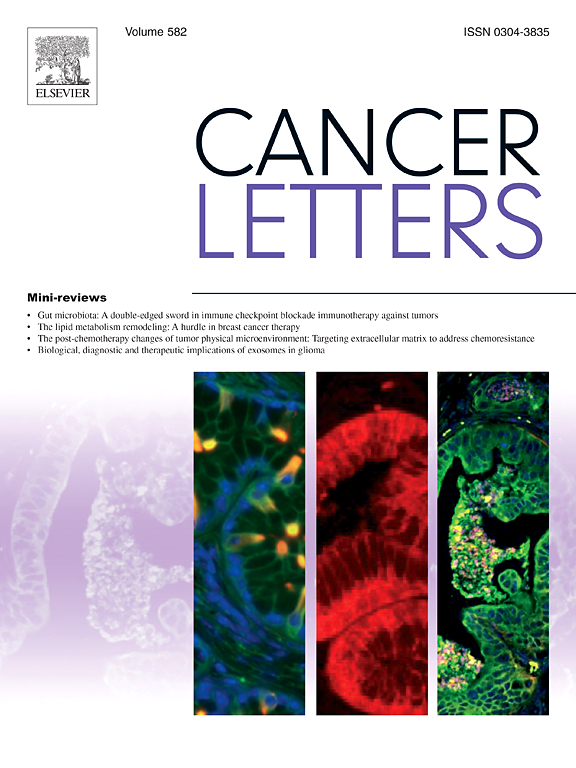Radiosensitization of intrahepatic cholangiocarcinoma and metastatic disease in the liver using microbubble cavitation: results from a phase 2 clinical trial
IF 10.1
1区 医学
Q1 ONCOLOGY
引用次数: 0
Abstract
Ultrasound triggered microbubble destruction (UTMD) has been shown to sensitize tumors to radiation. This study evaluated the feasibility, safety, and efficacy of using UTMD for radiosensitization in participants with intrahepatic cholangiocarcinoma (ICC) and/or metastatic disease to the liver (MDL) receiving Yttrium-90 transarterial radioembolization (Y90-TARE). This was a prospective single-center IRB-approved clinical trial. Participants received four contrast ultrasound sessions: 1–2 weeks prior to Y90-TARE, 1–4 h post-treatment, and 1 week and 2 weeks post-Y90-TARE. The control group consisted of 1:1 nearest-neighbor propensity score matched historical controls participants that received Y90-TARE as part of standard-of-care. Safety was evaluated through general lab values, physiological monitoring and adverse events. Treatment response was determined by a 1–6 month CT/MRI and evaluated using modified Response Evaluation Criteria in Solid Tumors (mRECIST). Final analysis included 15 participants in each group. There were no differences in general lab values between groups (p > 0.15). In study participants, there were no differences in physiological monitoring between pre and post UTMD sessions (p > 0.20). There was a trend toward a better response distribution in the study group compared to the control group (study group: 0 % progressive disease (0/14), 29 % participants with stable disease (4/14), 21 % participants with partial response (3/14), 50 % participants with complete response (7/14) and control group: 33 % participants with progressive disease (5/15), 27 % with stable disease (4/15), 13 % with partial response (2/15), 27 % with complete response (4/15) when evaluating long-term imaging, p = 0.06). The addition of UTMD in participants that received Y90-TARE was feasible, safe, and might deliver improved treatment response.
使用微泡空化治疗肝内胆管癌和肝脏转移性疾病的放射增敏:来自2期临床试验的结果
超声触发的微泡破坏(UTMD)已被证明使肿瘤对辐射敏感。本研究评估了接受钇-90经动脉放射栓塞(Y90-TARE)治疗的肝内胆管癌(ICC)和/或肝脏转移性疾病(MDL)患者使用UTMD进行放射增敏的可行性、安全性和有效性。这是一项经irb批准的前瞻性单中心临床试验。参与者接受了四次对比超声检查:治疗前1-2周,治疗后1-4小时,治疗后1周和2周。对照组由1:1的最近邻倾向评分匹配的历史对照参与者组成,接受Y90-TARE作为标准护理的一部分。通过一般实验室值、生理监测和不良事件来评价安全性。治疗反应通过1-6个月的CT/MRI来确定,并使用改进的实体瘤反应评估标准(mRECIST)进行评估。最后的分析包括每组15名参与者。两组间一般实验室值无差异(p < 0.05)。在研究参与者中,UTMD治疗前后的生理监测没有差异(p < 0.20)。与对照组(研究组:0%进展性疾病(0/14),29%病情稳定(4/14),21%部分缓解(3/14),50%完全缓解(7/14)和对照组相比,研究组有更好的反应分布趋势:在评估长期影像学时,33%的参与者病情进展(5/15),27%的参与者病情稳定(4/15),13%的参与者部分缓解(2/15),27%的参与者完全缓解(4/15),p=0.06)。在接受Y90-TARE的参与者中添加UTMD是可行的,安全的,并且可能提供改善的治疗反应。
本文章由计算机程序翻译,如有差异,请以英文原文为准。
求助全文
约1分钟内获得全文
求助全文
来源期刊

Cancer letters
医学-肿瘤学
CiteScore
17.70
自引率
2.10%
发文量
427
审稿时长
15 days
期刊介绍:
Cancer Letters is a reputable international journal that serves as a platform for significant and original contributions in cancer research. The journal welcomes both full-length articles and Mini Reviews in the wide-ranging field of basic and translational oncology. Furthermore, it frequently presents Special Issues that shed light on current and topical areas in cancer research.
Cancer Letters is highly interested in various fundamental aspects that can cater to a diverse readership. These areas include the molecular genetics and cell biology of cancer, radiation biology, molecular pathology, hormones and cancer, viral oncology, metastasis, and chemoprevention. The journal actively focuses on experimental therapeutics, particularly the advancement of targeted therapies for personalized cancer medicine, such as metronomic chemotherapy.
By publishing groundbreaking research and promoting advancements in cancer treatments, Cancer Letters aims to actively contribute to the fight against cancer and the improvement of patient outcomes.
 求助内容:
求助内容: 应助结果提醒方式:
应助结果提醒方式:


